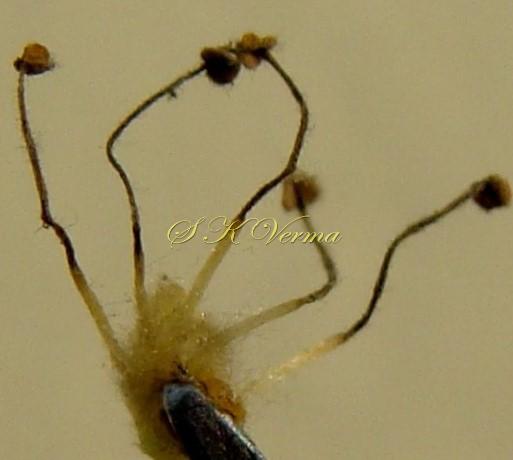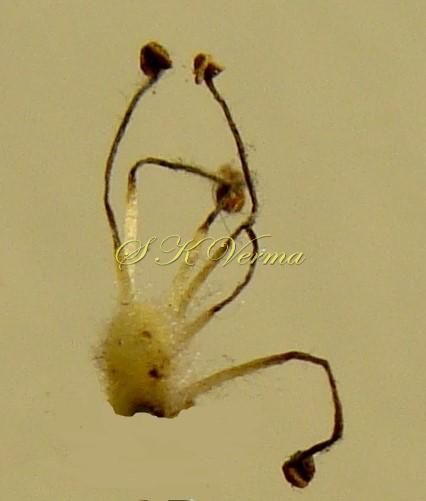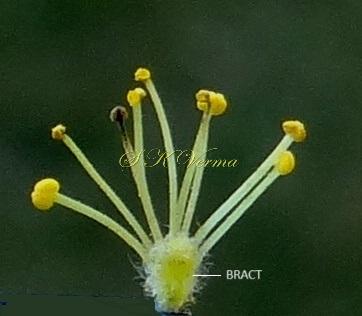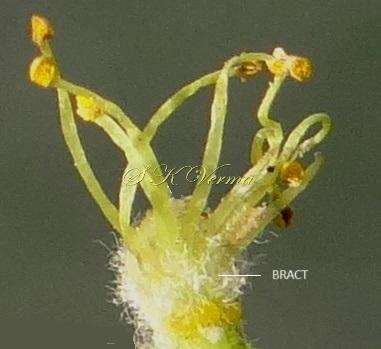SALIX
Salix
L., Sp. Pl. 1: 1015. 1753; Gen. Pl. 5: 447. 1754; Anderson in DC., Prodr. 16(2): 190. 1868; Boiss., Fl. Or. 4: 1181; 1869; Hook. f., Fl. Brit. India 5: 626. 1890; Parker, For. Fl. Punj. ed. 1: 500. 1918 (Reprint 1973); China @ eFloras.org 4: 162; Fl. Pak. @ eFloras.org Pakistan V 203.
Dioecious, deciduous trees or shrubs, sometimes dwarf. Buds with single outer scale. Branches terete. Leaves alternate, rarely opposite; petiole short; leaf blade linear-lanceolate, oblong or obovate. Stipules often present, small, free, deciduous or persistent, devolved mainly on vigorous branchlets. Flowers in catkins, erect, spreading, rarely pendulous, sessile or pedunculate dioecious or sometimes monoecious with male and female flowers in the same catkin; each flower in the axil of a bract. Perianth 0. Disk usually of 1-2 glands; when 1, usually opposite the bract and when 2, one opposite and other adjacent to bract. Male Flowers: Stamens 2-12, usually; filaments free or partly to completely connate, usually exceeding bract; anthers bithecous (rarely tetrathecous if filaments connate), dehiscence longitudinal. Female Flowers: Ovary sessile or stipitate, 1-locular, ovules few to many, on parietal placentas towards base of ovary; style usually short or absent; stigma entire, lobed or divided. Capsule 2-valved, when ripe the valves usually roll back after dehiscence. Seeds small, with a tuft of silky hairs.
470 species
Salix tetrasperma
Salix tetrasperma
Roxb., Pl. Coromandel 1: 66 t. 97. 1798; Hook. f., Fl. Brit. India 5: 626. 1888; Parker, For. Fl. Punj. ed. 1: 502. 1918 (Reprint 1973); China @ eFloras.org 4: 171; Fl. Pak. @ eFloras.org Pakistan V 203; keralaplants.in
A medium-sized deciduous, dioecious, male tree, bark with longitudinal furrows, rough, dull brown. Young branches silky pubescent to glabrous. Buds narrowly ovoid, glabrous, apex acute. Stipules conspicuous on vigorous shoots, obliquely ovate, glandular, serrate, caducous. Leaves alternate; petiole 10-25 mm long, slender, glabrous, grooved above; leaf blade 5-13 cm x 1.5-4.5 cm, lanceolate or ovate-lanceolate, margin entire to finely serrate, apex acuminate, base cuneate or rounded, green and glabrous above, pale beneath, +/- silky when young. Flowers appearing after the leaves. Flowers in catkins, pendulous, dioecious. Male catkin 5-15 cm long, yellow, sweet-scented, sessile or on up to 10 mm long peduncle, rachis villous. Flowers male, sessile, in whorls; each flower bracteate, bract 1-2 mm long, obovate, concave, yellowish brown, totally or partly villous, tip obtuse to truncate. Perianth absent. Bracteoles absent. Stamens 5-10; filaments free, woolly towards base; anthers yellow, ovoid, basifixed, dehiscence longitudinal. Disk of 2 yellow glands, one opposite and other adjacent to bract.
Female plants not available for study.
Common Names: Indian Willow
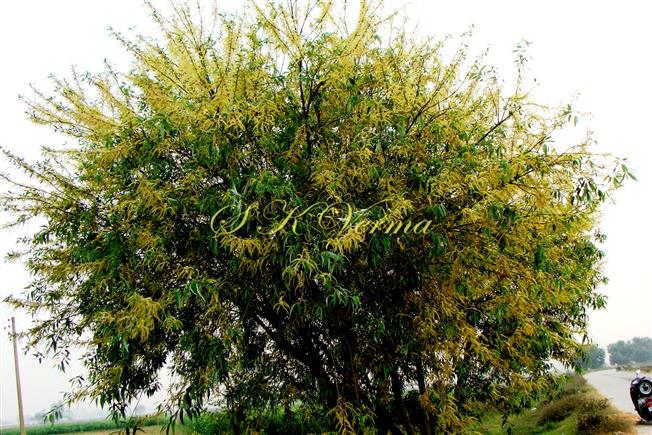
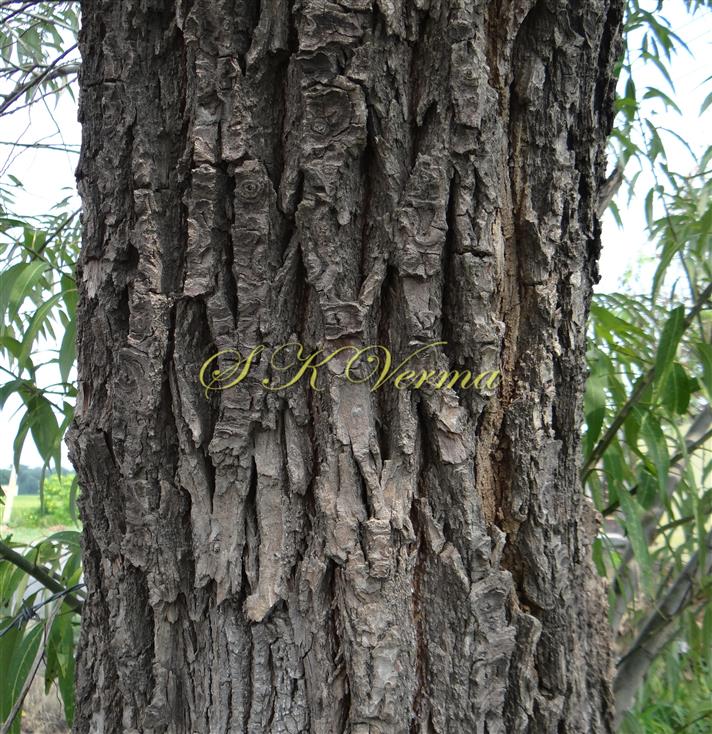
-DSC01809.jpg)
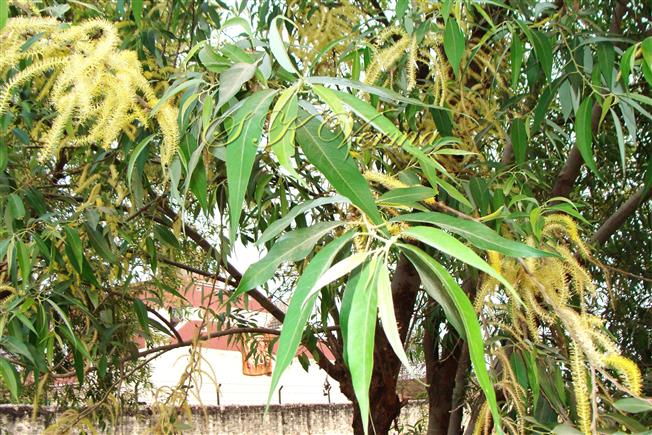
 with Male Inflorescence-2167.jpg)
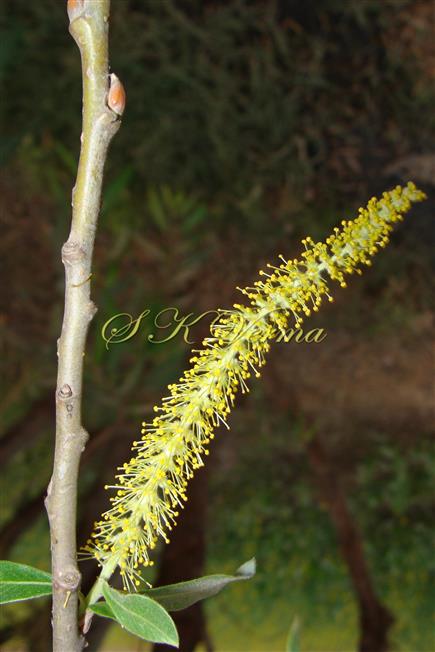
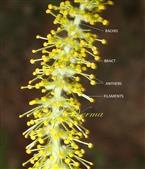
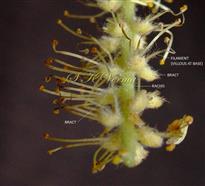
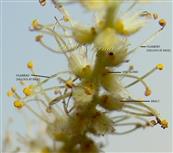



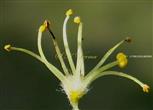




-DSC01809.jpg)

 with Male Inflorescence-2167.jpg)




